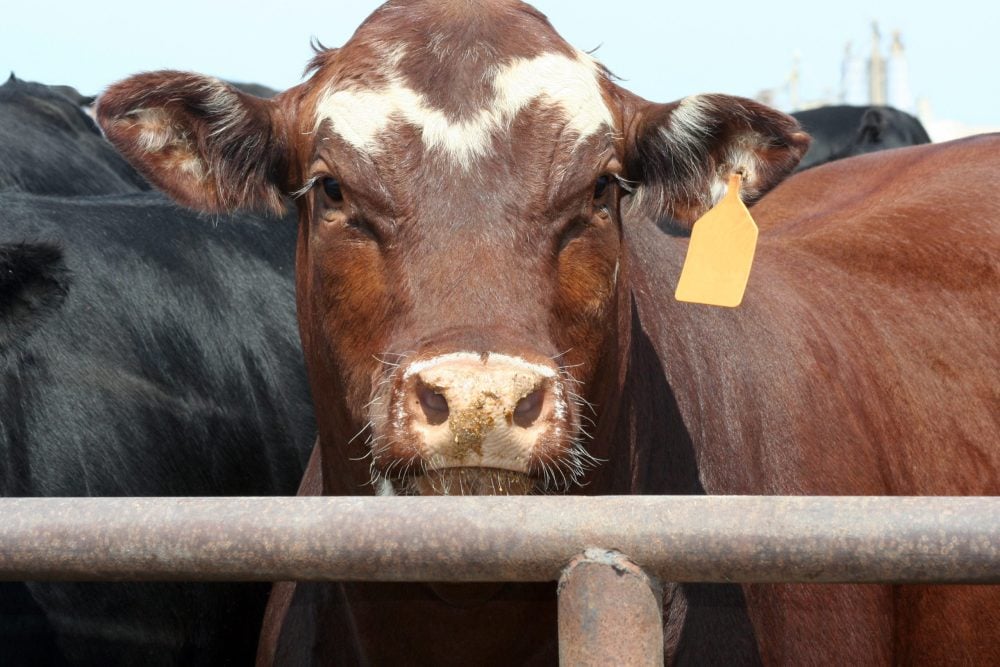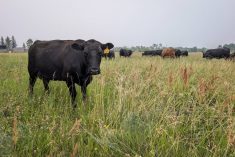Any barns raised or farm buildings put up in Manitoba after Nov. 1 will have to meet a new farm building code coming into effect that day.
Provincial Labour Minister Jennifer Howard on Friday announced the new safety standards for farm buildings along with amendments to the province’s general building and plumbing codes, also to take effect Nov. 1.
“We want to be sure that all reasonable efforts are made to protect lives, whether they are those of livestock, producers or the firefighters called out to fight a fire,” Howard said in a release.
Read Also

U.S. livestock: Cattle futures plunge daily limits on beef price fears
Reuters — Most Chicago Mercantile Exchange live cattle and feeder cattle futures contracts fell their respective daily limits on Friday,…
Having codes in place will also set a standard, thus making it easier for producers to get insurance, she added.
The province’s Buildings and Mobile Homes Act has until now exempted farm buildings, other than dwellings, from the requirements of the Manitoba Building Code. But a surge in hog barn fires in recent years, killing tens of thousands of animals, helped spur a move to include agricultural buildings under the code.
“Economic losses in farm building fires are severe and are proportionally higher than fires in urban areas,” the province noted Friday. From 1998 through 2007, financial losses from fires involving farm buildings totalled about $98.9 million.
And such fires often pose a “special threat,” the province said, as there’s usually considerable geography between farms and local fire halls.
The new farm code will classify new non-residential farm buildings as “light-industrial” or “medium-industrial” occupancies and will apply to all such buildings over 600 square metres in size.
Come Nov. 1, fire alarm systems are to be installed in all farm buildings covered under the code, and attic spaces in those buildings will be required to have fire stops every 300 square metres.
The new code will also require travel distance to an exit to be less than 30 metres in all buildings. New buildings and “major” renovations in farm buildings will also have to be certified by a structural engineer.
“Practical approach”
The province emphasized Friday that there will be “some flexibility” within the new code to allow for the construction to “meet the goal of fire safety.”
Because of the variety of building designs, the codes will allow for “equivalencies,” the province said. Those will be reviewed by a Manitoba Farm Building Code committee, overseen by the provincial fire commissioner’s office.
Ventilation systems, for example, vary from farm to farm and building to building. Vegetable growers use downdraft air systems in their buildings, whereas hog barns usually use forced-air systems.
The province noted it has held “extensive consultations” on the farm code, involving the fire commissioner’s office, provincial agriculture department, farmers and stakeholder groups such as the Vegetable Growers Association of Manitoba, Manitoba Pork Council, the insurance industry, animal welfare groups and Keystone Agricultural Producers.
“We believe these new standards are a practical, common-sense approach to fire safety,” KAP president Ian Wishart, a Portage la Prairie farmer, said in the province’s release.
All that said, industry observers have previously noted a farm building code won’t immediately curb the losses of Manitoba livestock in barn fires. Given the current economics of hog production, few if any new barns are likely to be raised in the near future.
Citing environmental concerns, the province has also had an indefinite moratorium in place since 2008, banning new hog operations and expansions of existing hog farms.
The ban is specific to three regions including Manitoba’s southeastern “hog alley,” much of the Red River Valley and parts of the Interlake region between Lakes Winnipeg and Manitoba.
Among the other provinces, British Columbia, Ontario, Nova Scotia, Saskatchewan and the Yukon already have farm building construction codes in place.














